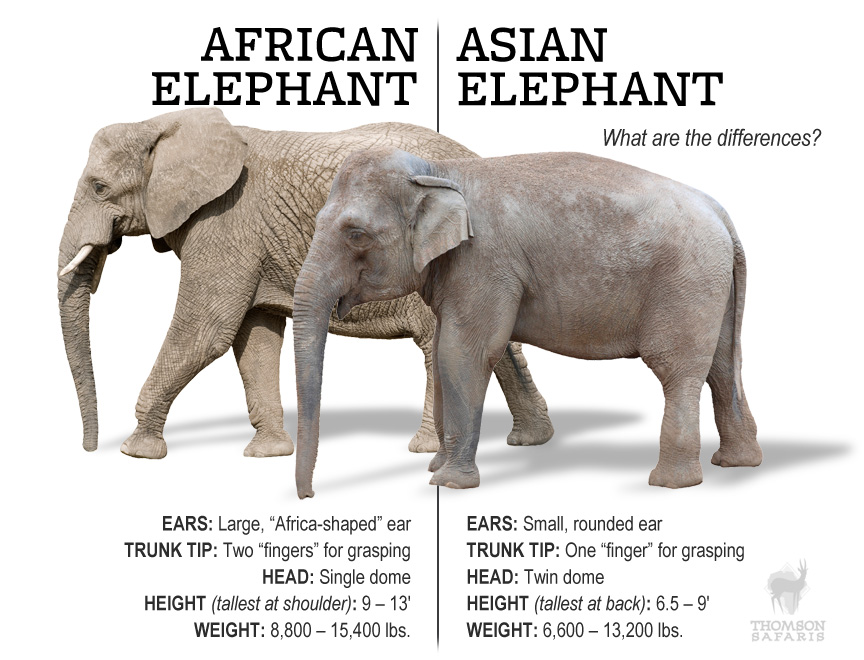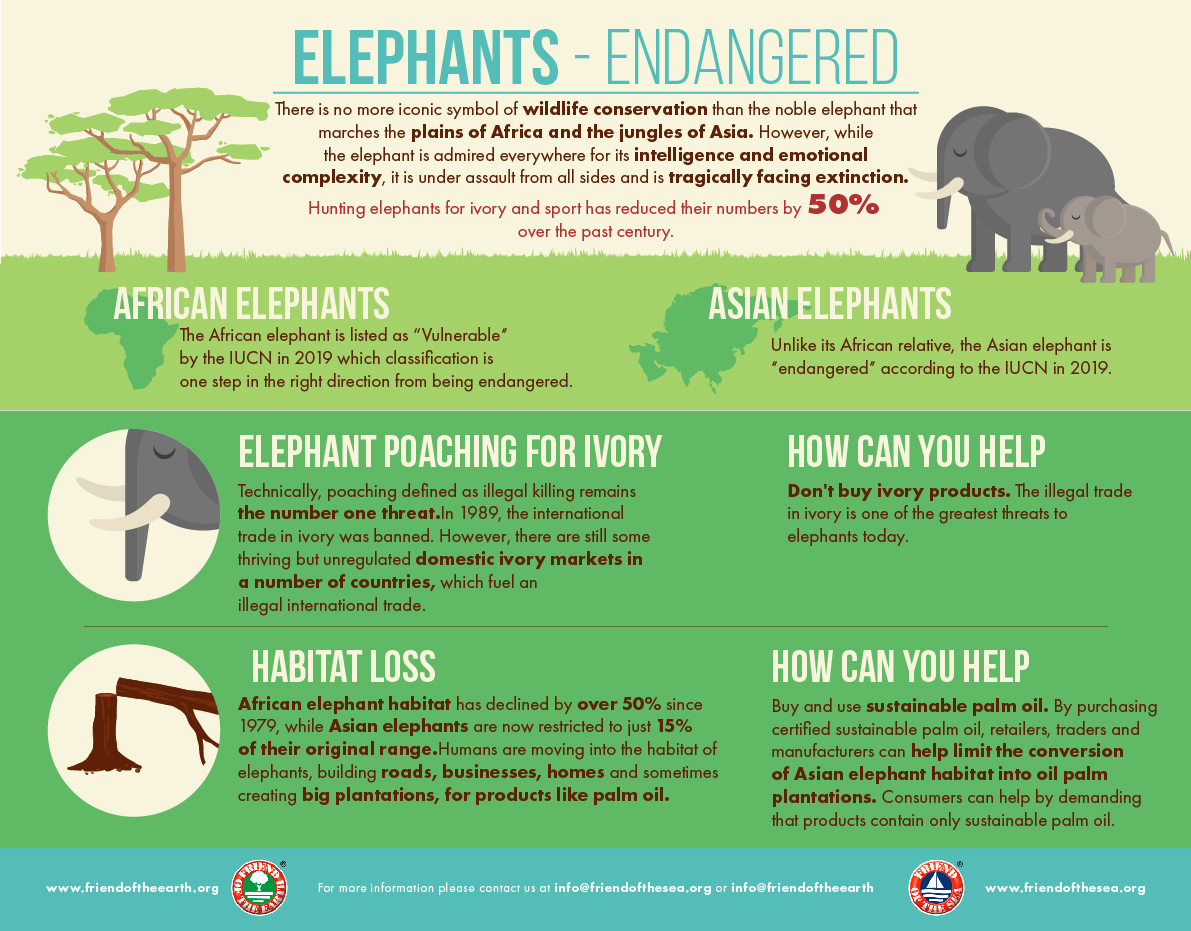I have always loved have been fascinated by elephants and when I heard there is a day dedicated to them, I knew this was a post I had to write since today is World Elephant Day.
The largest existing land animal, three living species of elephants are currently recognised: the African bush elephant, the African forest elephant, and the Asian elephant. African elephants have larger ears and concave backs, whereas Asian elephants have smaller ears and convex or level backs. The distinctive features of all elephants include a long proboscis called a trunk, tusks, large ear flaps, massive legs, and tough but sensitive skin. The trunk is used for breathing, bringing food and water to the mouth, and grasping objects. Tusks, which are derived from the incisor teeth, serve both as weapons and as tools for moving objects and digging. The large ear flaps assist in maintaining a constant body temperature as well as in communication. The pillar-like legs carry their great weight.
Elephants are scattered throughout sub-Saharan Africa, South Asia, and Southeast Asia and are found in different habitats, including savannahs, forests, deserts, and marshes. They are herbivorous, and they stay near water when it is accessible. They are considered to be keystone species, due to their impact on their environments. Elephants have a fission-fusion society, in which multiple family groups come together to socialise. Females or cows tend to live in family groups, which can consist of one female with her calves or several related females with offspring. The groups, which do not include bulls, are usually led by the oldest cow, known as the matriarch. Males or bulls leave their family groups when they reach puberty and may live alone or with other males. Adult bulls mostly interact with family groups when looking for a mate. Calves are the centre of attention in their family groups and rely on their mothers for as long as three years. Elephants can live up to 70 years in the wild and communicate by touch, sight, smell, and sound, using infrasound and seismic communication over long distances. Elephant intelligence has been compared with that of primates and cetaceans and they appear to have self-awareness and appear to show empathy for dying and dead family members.
African bush elephants and Asian elephants are listed as endangered and African forest elephants as critically endangered by the International Union for Conservation of Nature or IUCN. One conservationist has stated that both African and Asian elephants face extinction within twelve years. The current population estimates are about 400,000 for African elephants and 40,000 for Asian elephants, although it has been argued that these numbers are much too high. The WWF reports that Asian elephant numbers have dropped by at least 50% over the past three generations. An estimated 35,000 African elephants are still killed every year for their tusks, according to the African Wildlife Foundation.
World Elephant Day is an annual event on August 12, dedicated to the preservation and protection of the world’s elephants. Conceived in 2011 by Canadian filmmakers Patricia Sims and Michael Clark of Canazwest Pictures, and Sivaporn Dardarananda, Secretary-General of the Elephant Reintroduction Foundation in Thailand, an initiative of HM Queen Siriki. Since then, World Elephant Day is recognised and celebrated by over 100 wildlife organizations and many individuals across the globe. This provides citizens, policy-makers, politicians, and governments a way to create and support conservation solutions that will make the world a safe place for elephants, wildlife, and habitat for future generations to cherish. The foundation uses a neutral approach that allows and facilitates everyone to conduct campaigns that demand cooperation across borders and political lines. The day is a rallying call for people to support organisations working to stop the illegal poaching and trade of elephant ivory and other wildlife products, protect wild elephant habitat, and provide sanctuaries and alternative habitats for domestic elephants to live freely.
The goal of World Elephant Day is to create awareness of the urgent plight of African and Asian elephants and to share knowledge and positive solutions for the better care and management of captive and wild elephants.
The demand for ivory, which is highest in China leads to the illegal poaching of both African and Asian elephants. With the street value for ivory now exceeding that of gold, African elephants face a poaching epidemic. Elephants are also poached for meat, leather, and body parts, with the illegal wildlife trade putting elephants increasingly in danger because it is perceived to be a low-risk and high-profit endeavour. The loss of habitat due to deforestation increases in mining, and agricultural activities has become problematic, especially for Asian elephants. The fragmentation of habitat also creates isolation which makes breeding more difficult and allows poachers to find the elephants and set traps more easily. Asian elephants have lost nearly 30-40% of their habitat, making it incredibly difficult to maintain their offspring and themselves. Human-elephant conflict is a significant concern, as human populations increase and forest cover decreases, forcing elephants into proximity to human settlements. Incidents include crop damage and economic losses, as well as both elephant and human casualties. A lack of legislation regarding the care and treatment of elephants in zoos, circuses, and tourism often leads to their mistreatment and captivity can be a serious threat with Asian elephants often illegally captured in the wild and trafficked into the lucrative tourism industry. A lack of legislation regarding the care and treatment of elephants in zoos, circuses, and tourism often leads to their mistreatment.
Elephants have a vital role to play in shaping ecosystems and are considered a keystone species for the role they play. They trample forests and dense grasslands, supporting the growth of smaller species. They also travel vast distances, dispersing seeds in their dung, and supporting vegetation growth. Some research suggests that elephants could disperse seeds up to 65km, which helps to maintain the genetic diversity of many tree species and prevent local inbreeding. Therefore, elephants are critical to the integrity of the African savanna ecosystems.
So on this day, use your voice to spread the word about these gentle giants and support organisations and solutions to better care for them so they can move away from the critical and endangered lists. And before I go, here are some videos of the cutest baby elepants. Watch and smile!





